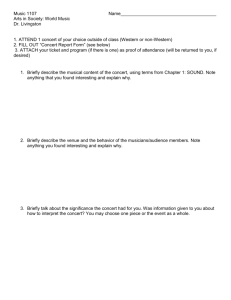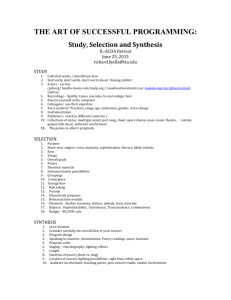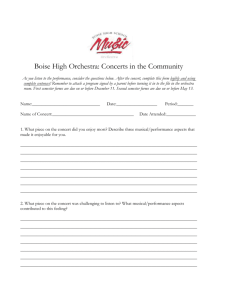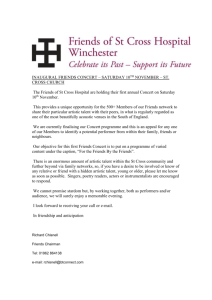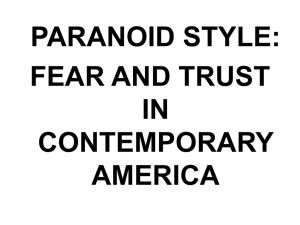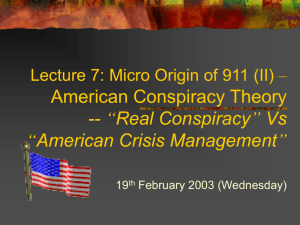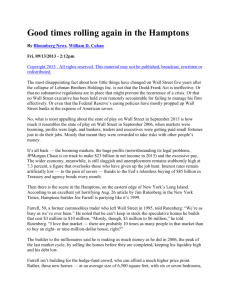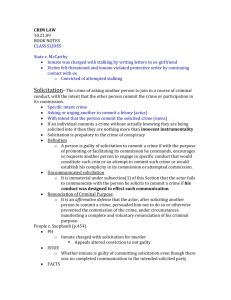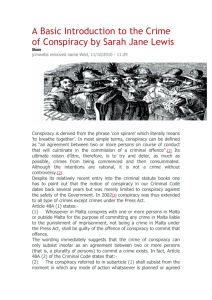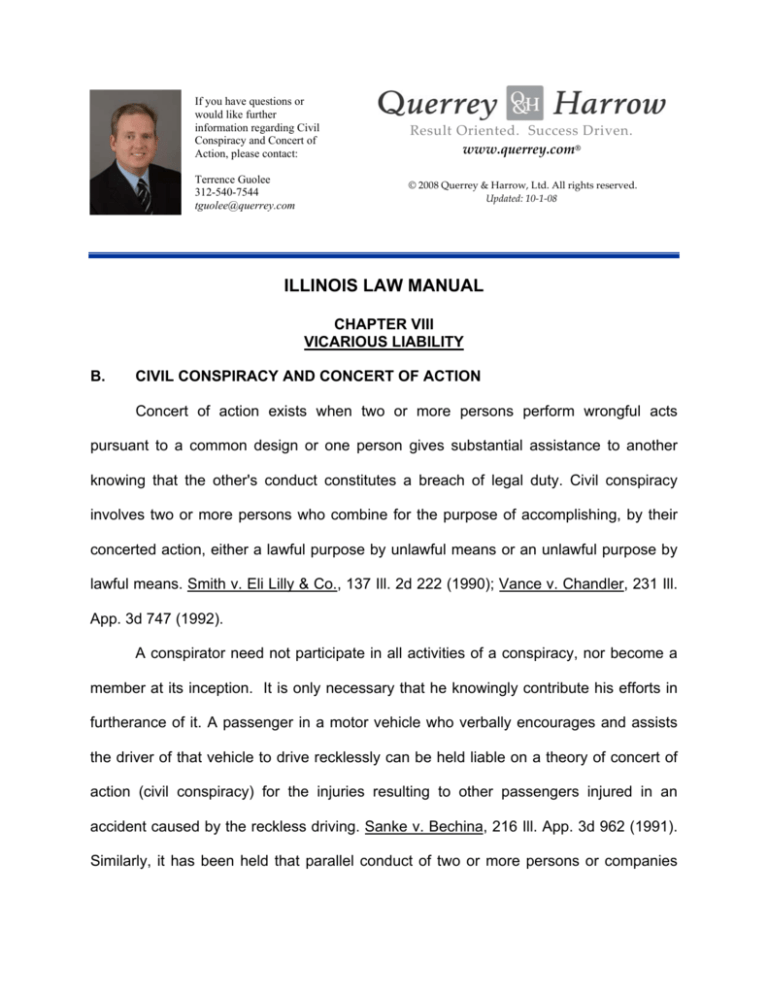
If you have questions or
would like further
information regarding Civil
Conspiracy and Concert of
Action, please contact:
Terrence Guolee
312-540-7544
tguolee@querrey.com
Result Oriented. Success Driven. www.querrey.com® © 2008 Querrey & Harrow, Ltd. All rights reserved. Updated: 10‐1‐08
ILLINOIS LAW MANUAL
CHAPTER VIII
VICARIOUS LIABILITY
B.
CIVIL CONSPIRACY AND CONCERT OF ACTION
Concert of action exists when two or more persons perform wrongful acts
pursuant to a common design or one person gives substantial assistance to another
knowing that the other's conduct constitutes a breach of legal duty. Civil conspiracy
involves two or more persons who combine for the purpose of accomplishing, by their
concerted action, either a lawful purpose by unlawful means or an unlawful purpose by
lawful means. Smith v. Eli Lilly & Co., 137 Ill. 2d 222 (1990); Vance v. Chandler, 231 Ill.
App. 3d 747 (1992).
A conspirator need not participate in all activities of a conspiracy, nor become a
member at its inception. It is only necessary that he knowingly contribute his efforts in
furtherance of it. A passenger in a motor vehicle who verbally encourages and assists
the driver of that vehicle to drive recklessly can be held liable on a theory of concert of
action (civil conspiracy) for the injuries resulting to other passengers injured in an
accident caused by the reckless driving. Sanke v. Bechina, 216 Ill. App. 3d 962 (1991).
Similarly, it has been held that parallel conduct of two or more persons or companies
may serve as circumstantial evidence of a civil conspiracy among manufacturers of the
same or similar products. McClure v. Owens Corning Fiberglas Corp., 188 Ill. 2d 102,
135 (Ill. 1999).
The basis of the legal theory of concert of action is found in Section 876 of the
Restatement (Second) of Torts (1979). That section provides that a person can be
legally liable for harm resulting to a third person from the tortious conduct of another if
that person:
(a) does a tortious act in concert with the other or pursuant to a common
design with him;
(b) knows that the other's conduct constitutes a breach of duty and gives
substantial assistance or encouragement to the other to so conduct
himself; or
(c) gives substantial assistance or encouragement to the other in
accomplishing a tortious result, and his own conduct, separately
considered, constitutes a breach of duty to the third person.
-2-

